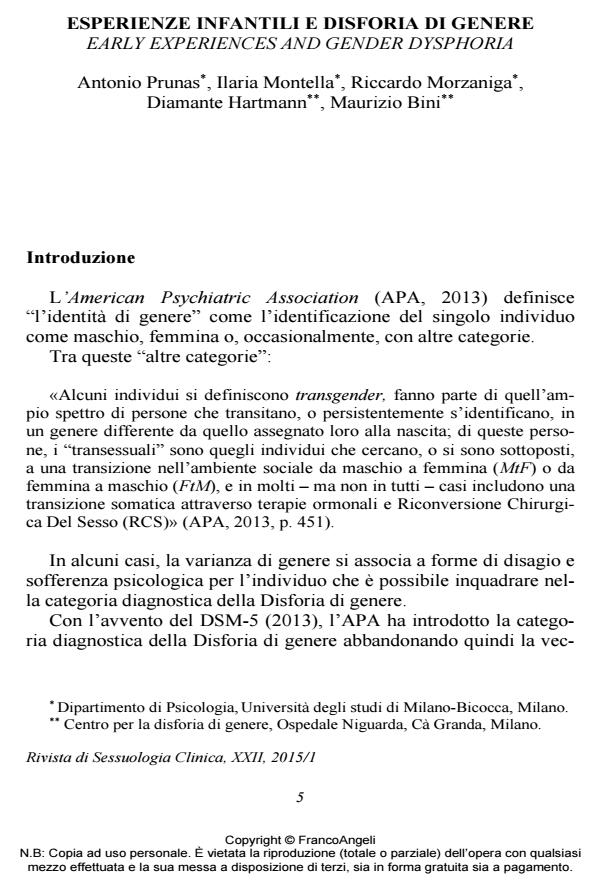Early experiences and gender dysphoria
Journal title RIVISTA DI SESSUOLOGIA CLINICA
Author/s Antonio Prunas, Ilaria Montella, Riccardo Morzaniga, Diamante Hartmann, Maurizio Bini
Publishing Year 2015 Issue 2015/1
Language Italian Pages 15 P. 5-19 File size 122 KB
DOI 10.3280/RSC2015-001001
DOI is like a bar code for intellectual property: to have more infomation
click here
Below, you can see the article first page
If you want to buy this article in PDF format, you can do it, following the instructions to buy download credits

FrancoAngeli is member of Publishers International Linking Association, Inc (PILA), a not-for-profit association which run the CrossRef service enabling links to and from online scholarly content.
The aim of the present study is to analyze the psychometric properties of the Italian version of the RCGI/GR-Q, a questionnaire aimed at measuring recalled gender-typed behavior, gender identity and affective closeness to mother and father during childhood. We assessed its factorial structure, internal consistency, convergent validity and the relationship with other measures including personality structure and general psychopathology. Methods: the sample is composed of 214 con trol subjects and 79 participants with gender dysphoria (GD) requesting Sex Reassignment Surgery. All participants completed the RCGI/GR-Q and a set of questionnaires to assess other measures of interest. Results: the RCGI/GR-Q showed a three-factor solution and a good internal consistency; the GD sample recalled significantly more cross-gender behaviors, and less perceived care from parents during childhood; no association was found with the other measures, except for the MtF sample. Conclusions: results show that the RCGI/GR-Q has reasonable psychometric properties supporting the possibility to use it in both clinical settings and research.
Keywords: Gender dysphoria, recalled childhood, gender role, gender identity, assessment, transsexualism.
Antonio Prunas, Ilaria Montella, Riccardo Morzaniga, Diamante Hartmann, Maurizio Bini, Esperienze infantili e disforia di genere in "RIVISTA DI SESSUOLOGIA CLINICA" 1/2015, pp 5-19, DOI: 10.3280/RSC2015-001001